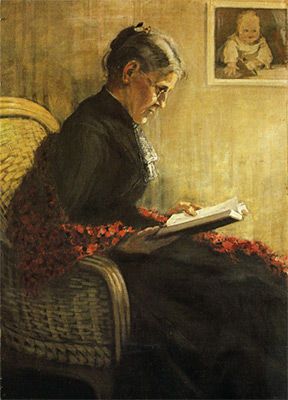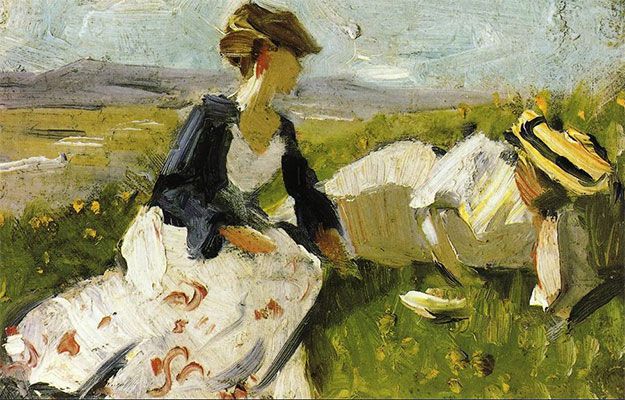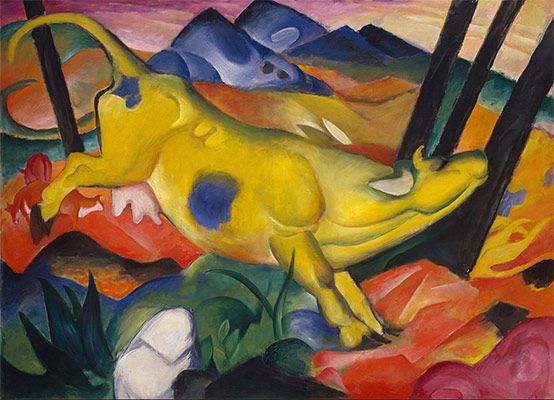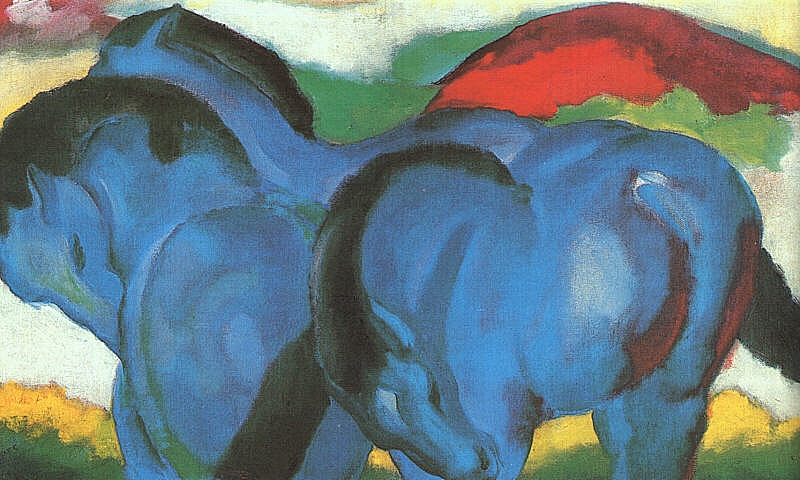Expressionism, Fauvism, & Early 20th Century – Franz Marc

Franz Marc was a german painter best remembered for his symbolic paintings of animals (mostly horses) in bold colours. He was an extremely influential artist who impacted a series of different expressionist movements and founded the Der Blaue Reiter (“The Blue Rider”) who rejected the Neue Künstlervereinigung München (“Munich New Artist’s Association” in English, they were a the the first modernist secession group).
Initially, Marc’s works show a clear connection to realism and naturalism, the two most common
Styles in academic art. His painting Portrait of the Artist’s Mother (1902) is a very good example of this style. The colours muted colours, (especially compared to the bright and bold colours which we would later become so famous for), the attention to detail and the subject (specifically German artists showed an affinity to depicting ordinary people completing ordinary tasks) are all emblematic of both these styles.

“Two Women on the Hillside” painted in 1906 is an example of Marc beginning to breaking away from his realistic and naturalistic style. It was painted after Marc returned from a to Paris where he studied the impressionists and demonstrates this beginning. In this piece, Marc sets begins to set aside realism for the essence of the event. Additionally, in this piece Marc utilizes loose brushstrokes and flattened space from the impressionist movement, which are key characteristics of later expressionistic work. The brustrokes in particular are very linear, which is a motif which he utilized in his later works.

However, this was only the beginning of his shift in style. March’s “The Yellow Cow” painted in 1911 is one of his most famous works, and its demonstrative of the unique style he cultivated in later in his life. Perhaps most noticeable is the immediate change in his approach to colour, the soft muted colours of his earlier works are long gone. Instead, they are replaced with bold and vibrant colours, which Marc imbued with extra meaning. He was particularly interested in using colour to evoke emotion and create symbolism and took a look of cues from Van Gogh’s work. Marc eventually theory of colour symbolism in which blue represented the masculine, yellow the feminine, and red the physical (most commonly, violence). We can see his application of his theory in this work, with blue and yellow of the cow meant to symbolize his marriage to his Maria Franck. Additionally, animals are the most common subject in Marc’s mature works. The background is greatly abstracted and most likely does not correspond with a certain image or place. The whole painting is imbued with energy and movement.

While I like pretty much all of his works, I find his later works to be particularly compelling. The naturalistic and realistic paintings, as beautiful as they don’t have the same personality as his later works do, and fade in comparison. I like his approach to colour, even if my views on colour symbolism don’t necessarily align with his.
Sources
* https://www.theartstory.org/artist-marc-franz-artworks.htm
*https://www.theartstory.org/artist-marc-franz.htm
*https://www.guggenheim.org/artwork/artist/franz-marc
Picture Sources (in order which they appear)
* https://www.wikiart.org/en/franz-marc/self-portrait-1905
*https://www.theartstory.org/artist-marc-franz-artworks.htm
*https://www.theartstory.org/artist-marc-franz-artworks.htm
*https://www.theartstory.org/artist-marc-franz-artworks.htm
*https://en.wikipedia.org/wiki/Franz_Marc#/media/File:Franz_Marc-_Die_kleinen_blauen_Pferde.jpg